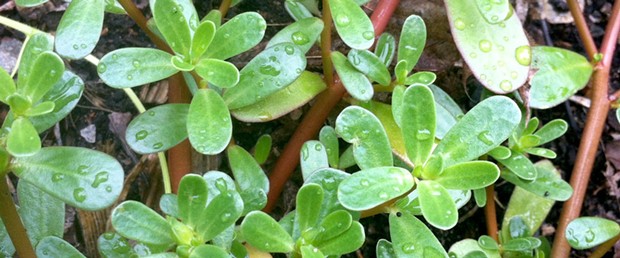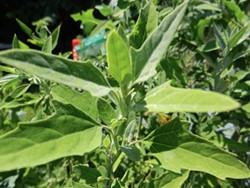[
{
"name": "Top Stories Video Pair",
"insertPoint": "7",
"component": "17087298",
"parentWrapperClass": "fdn-ads-inline-content-block",
"requiredCountToDisplay": "1"
}
]
Take a moment to ponder your relationship with the wild plants in your garden. Chickweed, thistle, pigweed, plantain. Cleavers, lemon balm, nettle. These not only provide forage for insects, birds, and animals, they also provide food for you. Most of the common vegetables we enjoy in our salads, such as lettuce, carrots, parsley and mustard, were once considered weeds. So why not let their wild kin act as volunteer herbs and vegetables?
Edible weeds taste great in a variety of recipes, and are known to be more nutritious than domesticated plants. You probably already know about a few of these — perhaps you've even tried dandelion greens or purslane in your salad. Here I offer a rundown of my favorite weeds to eat and ways I like to prepare them, organized by season.
Early Spring
Fresh Eating. You can make a delicious salad with the very early leaves of just about any of the plants listed in this article, but my favorites are dandelion (Taraxacum officinale), miner's lettuce (Claytonia perfoliata), chickweed (Stellaria media), sheep sorrel (Rumex acetosella) and purslane (Portulaca oleracea). Chop them all together with lettuce, sunflower seeds and a light vinaigrette.
Late Spring
Weedy Smoothies. When the weeds are still young but starting to taste bitter when eaten raw, try putting them in smoothies. I love a smoothie with avocado, kiwi, peeled cucumber, hemp seeds, lamb's quarter (Chenopodium album), sheep sorrel and purslane.
Summer
Baked Weeds. Use weeds like spinach to make lasagna, enchiladas or spanikopita. Try it with lamb's quarter, pigweed (Amaranthus palmeri), burdock (Articum lappa) and/or chickweed (Stellaria media).
Fall
Yum-Yum. Collect the large, bitter leaves of late-season dandelion, burdock and broad-leaf plantain (Plantago major). Add some long branches of lemon balm (Melissa officinalis) and pigweed. Hang them in bundles in a warm, dry space for a couple of weeks, to let them dehydrate. When dry, shuck the leaves off the stems and crumble them together with sea salt, powdered cumin and dried seaweed. Use this to sprinkle in soups, salads, salsa and everything else, to boost nutrition and aid digestion.
Winter
Weed Pesto. Collect the earliest shoots of stinging nettle (Urtica dioica), cleavers (Galium aparine) and miner's lettuce. Put them in a blender with olive oil, garlic, asiago and a handful of seeds from the milk thistle (Silybum marianum). Spread on fresh bread or tortillas.
Disclaimer:
Proper identification. Some plants are quite poisonous, and I have included the botanical names in this article in hopes that you will be careful to correctly identify any plant you eat. With any new food, it is wise to always try just a little bit first, then wait a day or two to see if your have an allergic reaction. Chances are, everything will be fine, but better safe than sorry!
Next month:
Garlic! Softneck, stiffneck, how to grow it and where to get the best varieties for Humboldt County.
Heather Jo Flores is the author and founder of Food Not Lawns. She writes about gardening, permaculture, ecofeminism, land art and community organizing. Visit www.heatherjoflores.com.
more from the author
-
Tales from the Underground
A rainbow of roots from around the world
- Sep 21, 2017
-
Hashtag, Bumper Crop
Veggies to plant now for fall and winter
- Aug 17, 2017
-
Plotting Out Your Garden: Part 2
- Apr 6, 2017
- More »


































